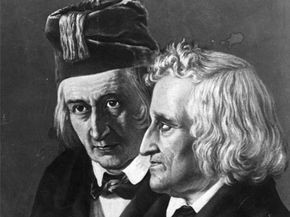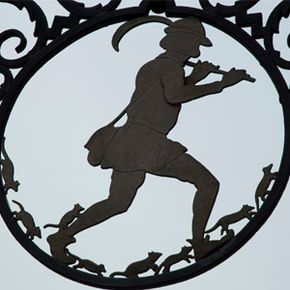When most people think of fairy tales, they typically conjure up images of idealized Prince Charmings and magical hair-braiding birds. However, if you've ever indulged a passing fancy of childhood nostalgia by picking up a copy of the Grimm brothers' original tales, you might have been startled by the contents inside. These stories are far from the bright and shiny, happily-ever-after ones your parents read to you as a child or that you saw in classic Disney movies. They can be exceptionally dark -- and as grim as their namesakes.
The Grimm brothers started collecting centuries-old, German folklore in the 19th century. Their interests in philology and linguistics drew them to write down the fascinating and culturally revealing stories that, up to that time, spread chiefly through oral storytelling. In that way, you could say that the Grimm brothers didn't set these tales down to paper for the particular purpose of entertaining children. And, although the tales themselves revolve around magical events and carry morals, many weren't geared specifically toward children as much as they were for the Germanic culture as a whole. However, the stories became popular among children, so they were toned down for that audience.
Advertisement
But the original, unbowdlerized Grimm stories still carry relevance. Not only are they fascinating peeks into the psyche of the German people of the Middle Ages, but certain stories actually help us make sense of mysterious and bizarre historical events.
This thought might be unsettling. Indeed, the Grimm stories are so dark that the suggestion one might carry a grain of truth is horrifying. However, in the case of the "Pied Piper of Hamelin," this seems to be the case.
Before we get into the theories and historical evidence behind the story, let's go over the story in detail. And we wouldn't suggest snuggling into bed and expecting to be lulled to sleep.
Advertisement



